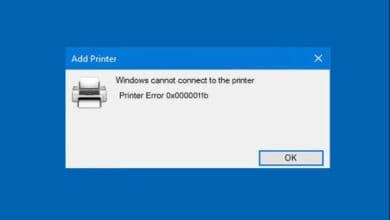
Merge, Annotate, and Convert PDF Files: Professionals in different industries must optimize workflow efficiency in today’s fast-paced digital world. You must merge, annotate, and convert files to streamline your workflow for better collaboration, communication, and accessibility. This article will help you become a pro at file management. It will guide you through the process, highlighting the advantages, tools, and best practices.
1. Streamlined Team Projects by Merging Documents
1. Benefits of Merging Files for Improved Workflow Efficiency
Merging files has many benefits. It helps you work more efficiently, collaborate better, and improve your workflow. Combining multiple files into one document saves time and reduces confusion by eliminating the need to switch between different files. The end product is a single document that gives a complete summary, making sharing, reviewing, and distributing information among team members easier.
2. Discovering strategies and tools to merge file formats
Using suitable methods and tools to merge files is essential, especially when dealing with different file formats.
1. Merging multiple documents into a single PDF
You can easily combine PDF files by using a PDF editor or online tools such as “PDF split and merge,” “combine PDF online,” or “merge PDF documents.” These tools make selecting, arranging, and merging files easy with their user-friendly interfaces. Ensure the merged PDF keeps the original files in order without any changes.
2. Combining different media files into a cohesive presentation
You can use apps like Adobe Premiere Pro or PowerPoint to merge media files quickly. You can use these versatile tools to combine different media elements, such as images, videos, audio, and more, into a single presentation. These tools combine visuals and sounds to make your content more impactful and engaging. They help create a polished final result.
3. Ensuring file integrity and order during the merging process
When merging files, keeping the files intact and maintaining the original content order is essential. Please review the combined document for any formatting or layout issues and make any necessary changes. Tools like “compress PDF file” can make the final document smaller without losing quality. It makes it easier to share.
2. Annotating Files for Enhanced Communication and Understanding
1. Importance of annotations in conveying ideas, feedback, and instructions
Annotations are essential for good communication because they help convey ideas, give feedback, and provide clear instructions. These are basic for emphasizing essential points, sharing valuable insights, and promoting teamwork among team members. It can help you understand better, clarify things, and make your work more efficient. It leads to increased productivity and effectiveness.
2. Using annotation tools and techniques for different file types
Annotating PDF documents with comments, highlights, and sticky notes
PDF editors and online tools allow you to easily add comments, highlights, and sticky notes to your PDF files. These tools can highlight important sections, add comments, and emphasize crucial information in the PDF document.
1. Marking up images and graphics with annotations
You can use image editing tools like Adobe Photoshop or online tools with annotation features for working with images and graphics. These tools allow you to add text, shapes, arrows, and callouts directly onto the image. It helps to provide context and explanations when necessary.
2. Tips for Better Annotations
- Be Clear: Make sure your annotations are easy to understand and concise.
- Use Simple Language: Avoid jargon or complex terms that may confuse readers.
- Provide Context: Give enough information to help readers understand the purpose and relevance of the annotation.
- Be Consistent: Follow a consistent format and style throughout your project.
3. To ensure your annotations are effective and clear
Keep annotations concise and to the point. To differentiate between different types of annotations, make sure to use consistent formatting and color schemes. It will help readers quickly identify and distinguish between the various annotations. Make sure to mark and refer to annotations to prevent any confusion. Regularly check and update your annotations to keep them accurate and relevant.
3. File Conversion for Compatibility and Accessibility
1. Advantages of converting files to different formats
Converting files to different formats makes sharing and accessing information on other platforms and devices easier. File conversion makes collaboration easier by allowing everyone to use the same file types, regardless of their software or hardware preferences.
2. Convert documents to PDF for easy sharing and global accessibility
Converting documents to PDF format has many advantages. PDF files can be viewed on any device or software without losing their formatting or layout. They can be opened and read by anyone without any compatibility problems.
3. Exploring conversion tools for specific file types (e.g., Word to PDF, JPG to PDF)
Many online tools and software applications can convert different types of files. You can easily convert Word documents to PDF using tools like “Word to PDF converter.” You can easily convert JPG images to PDF format using tools like “JPG to PDF converter.” These tools make the conversion process easier and ensure the files remain high quality and intact.
4. Efficient File Management and Organization
1. Strategies for organizing files for easy retrieval and navigation
Managing and organizing your files is crucial to make your work easier. Here are some strategies to implement:
- Organize your files in a logical folder structure that aligns with your work processes and categorizes them appropriately.
- Use the same naming style for all of them to make it easier to find and understand files.
- Keep your workspace clean and organized by regularly decluttering and archiving outdated files.
2. Using file naming conventions and organizing files into folders
Create a file naming convention with essential details like dates, project names, and brief descriptions. Organize files in a well-structured folder system to make it easy to find and move around files.
3. Using file management software and cloud storage solutions
Software and cloud storage solutions such as Google Drive, Dropbox, and Microsoft OneDrive provide useful features for managing and accessing files quickly. These tools help with searching, keeping track of versions, and accessing files from a distance. They make it easier to work together and improve productivity.
Learning how to merge, add notes to, and change file formats can greatly improve your productivity. Combining files makes collaboration easier, adding annotations improves communication, and converting files enhances compatibility and accessibility. To keep your workspace organized, follow these efficient file management practices. Use PDF editors and online tools to improve your file management skills and smooth your workflow.
Also Read;



